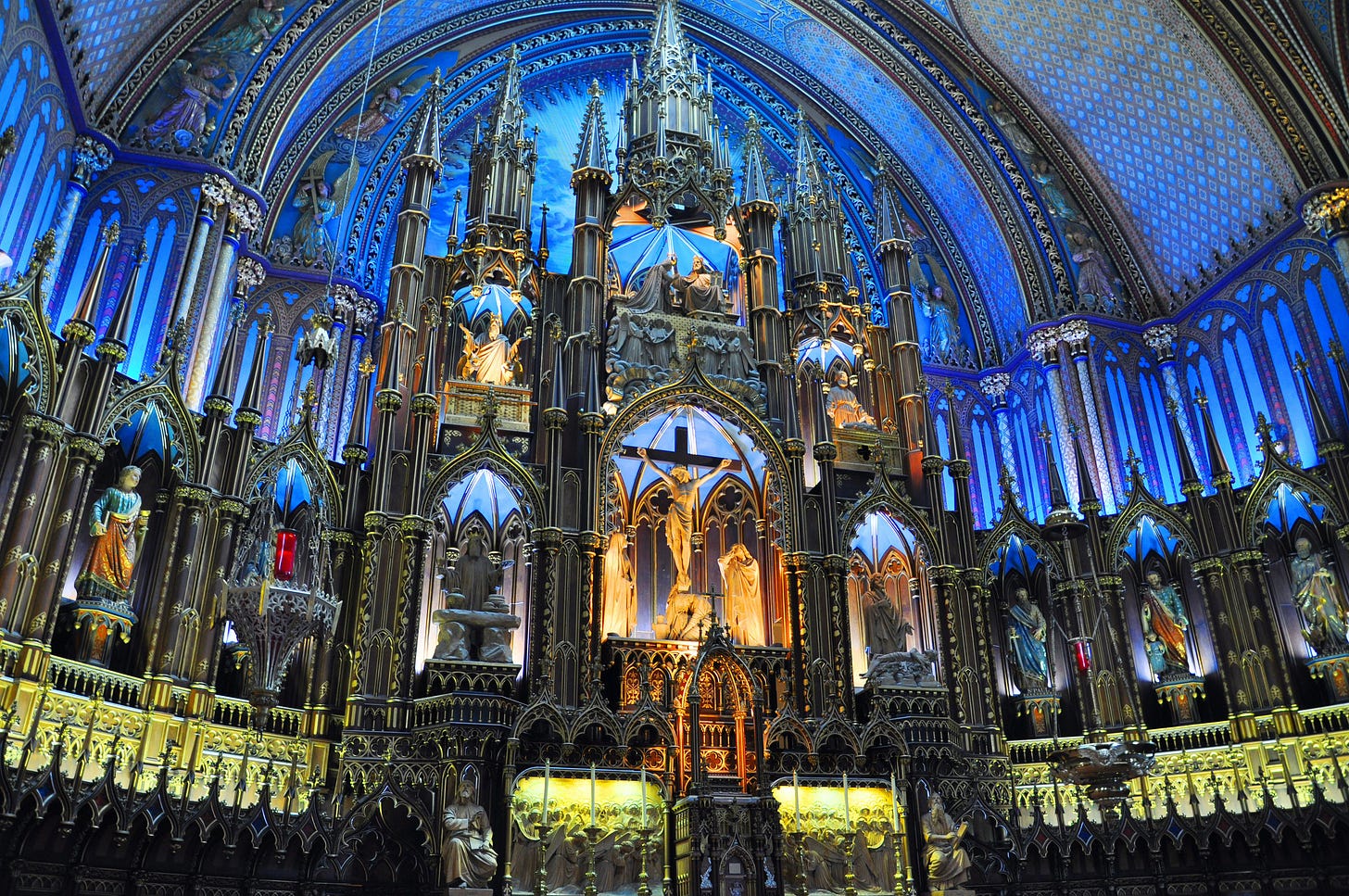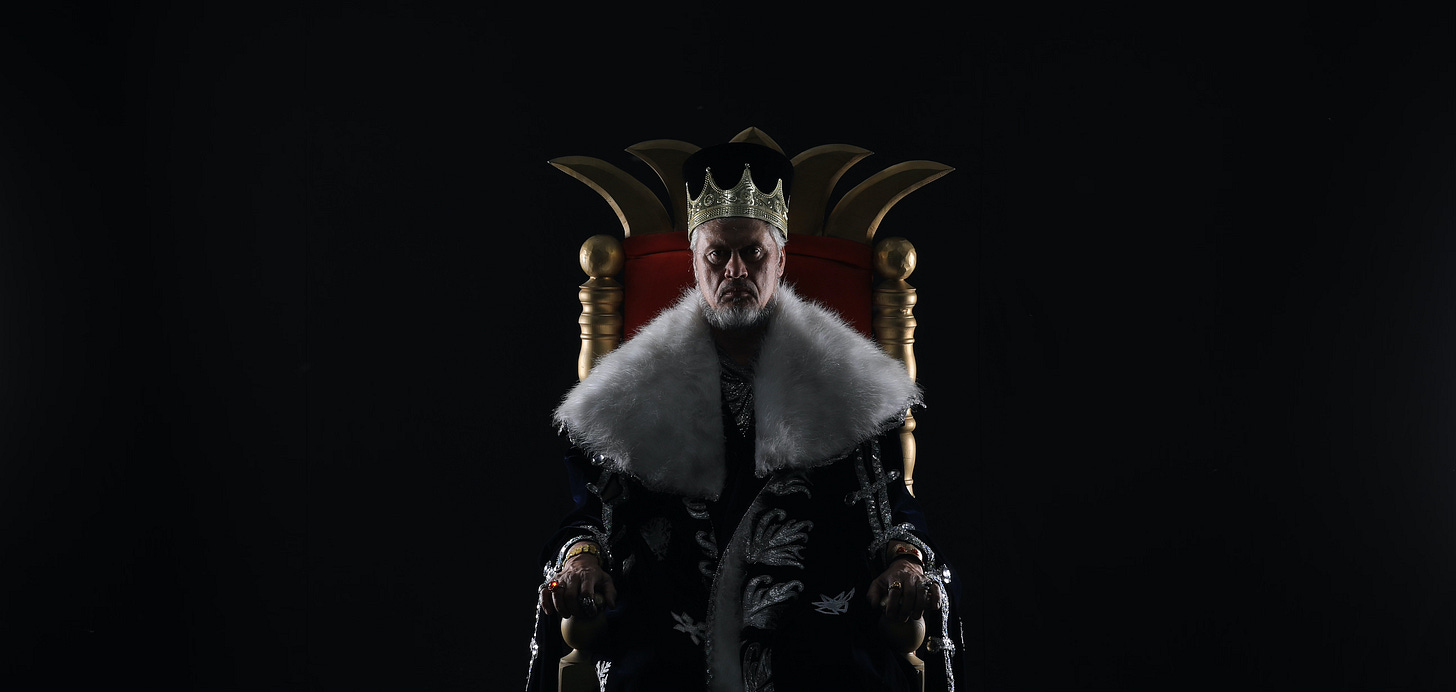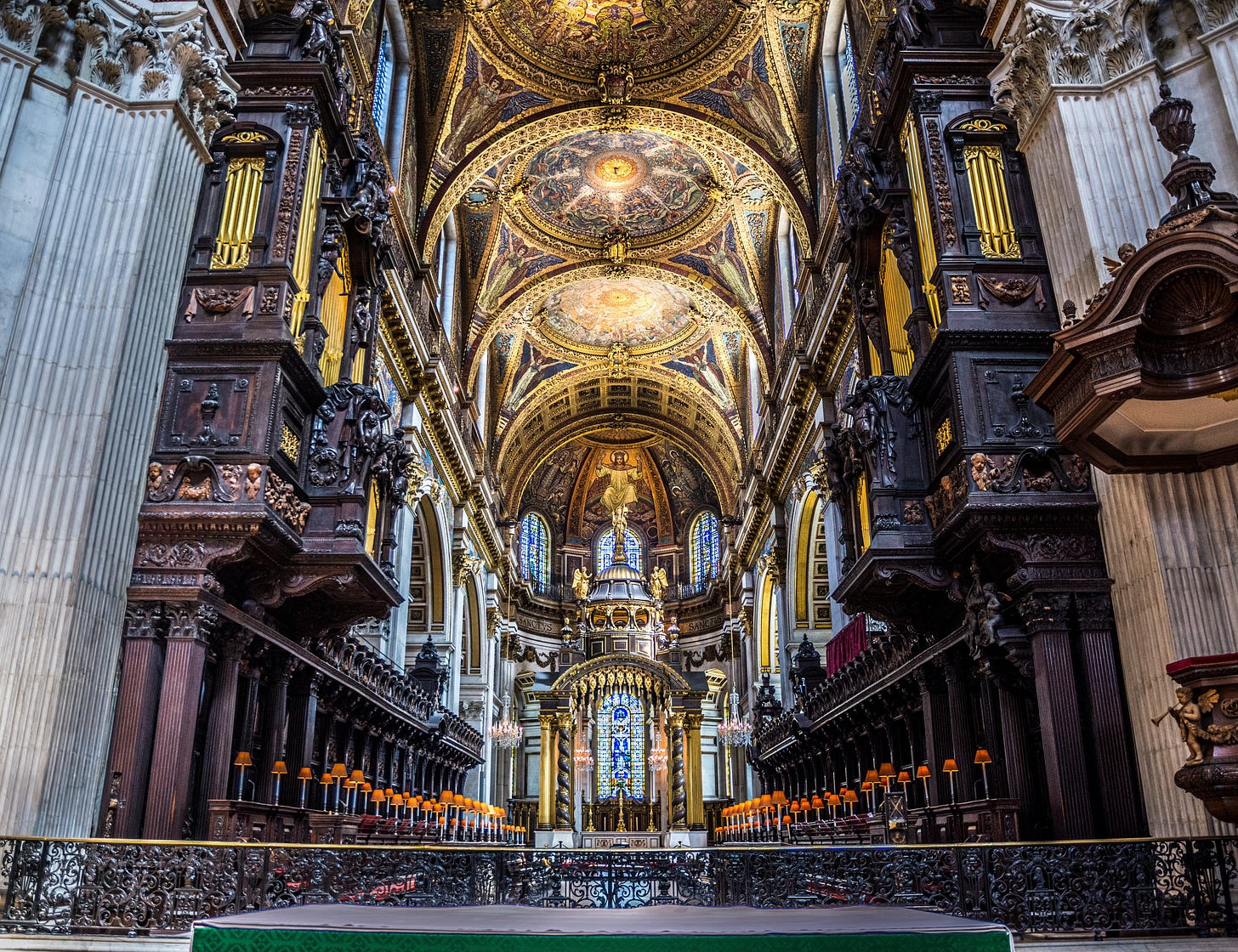It’s the mid-2020s, and big changes are upon us. The postwar international order led by the United States is pretty much dead, even as America-first patriotism (and jingoism) are making big comebacks. The borderless, horizontal world of neoliberalism is crumbling, while the Trump administration is targeting cultural liberalism with every tool at its disposal, and many that technically aren’t. No one really knows what the immediate consequences of all these changes will be, but the vibe shift extends across practically the whole world.
What kind of vibe shift? Well, Trump acts like a kind of monarch. The wildly popular Dune franchise presents images of ceremonial, vertical relations between dukes and subjects credibly and without irony. National leaders like El Salvador’s President Bukele and Argentina’s President Milei are anything but dispassionate technocrats, instead flouting eccentric personalities like 19th-century British barons.
One way of summing this all up is to say that, after nearly a century of a firmly horizontal social imaginary, our world is about to become a lot more vertical again. The über-democratic rhetoric, fashions, aesthetics, and philosophies that dominated the 20th century are giving way to a renewed appreciation for the mystique — and reality — of old-style hierarchy, for both good and ill.
The return of vertical relations might put even more power into the hands of authoritarian leaders in the near future. But it also means the reappearance of symbols and practices that make hierarchy something more compelling than just a chain of command. As in a royal ceremony, hierarchy might become a source of meaning.
If I’m right, the return of old-fashioned hierarchy comes with both opportunities and dangers. Navigating it will be a challenge for people of all persuasions. So let’s examine what’s happening, exactly, and where it’s likely to lead. I’ll use changes in architecture as a lens for the investigation, and I’ll end up asking how the church should respond to this sea change in our social imaginary.
Our Flat World
Up until the 20th century, hierarchy always meant mystique. Emperors and kings wielded ornate ceremonies, armed guards, and elaborate forms of address to surround themselves with an aura of mystery and danger. Public buildings and temples not only impressed, but overwhelmed. To walk into St. Paul’s cathedral in London (built in the early 18th century) is to be awed with the experience of numinous immensity. The soaring domes, the enormous choir, the hulking baldacchino above the high altar: this is a building constructed for the religious rites of an empire.
Modernity, though, fears and distrusts such mystery and mystique. It prefers propositions to be laid out in the daylight for all to see and for authority — if there is any — to be as accountable and rational as possible. At the tail end of the Enlightenment, the French and American revolutionaries declared that modern nations would have presidents instead of kings. Rather than a sacred order crowned by numinous royalty, governments would be more like very large steering committees, “presided” over by one committee member among many.
This was fundamentally a horizontal ideology, seeing everything and everyone as occupying the same plane of existence. Constitutional monarchs and presidents might play uniquely high-profile socially constructed roles, but they were no longer different or “other” from regular people. Hierarchy now just meant administrative responsibilities.
The liberal, globalized world that the USA has led for the past eight decades is firmly dedicated to this modern vision of society. Its art, architecture, economics, and politics have been characterized by a single overwhelming aesthetic of “flatness.” Instantly recognizable and homogenous the world over, this is the sleek lines of UN buildings or EU offices, the impassive glass walls of fungible International Style skyscrapers, the ubiquity of the business suit and democratic norms. In every global city, these aesthetics tell the same story: humanity will advance to the point where everything is flat. Rational. Streamlined. Democratized.
The Vertical World
But the idea of a rational, horizontal world is only a couple hundred years old. Before the Enlightenment, the rituals, aesthetics, and styles that accompanied monarchy or religious worship provided the foundation for a profoundly vertical universe. This universe, rich with symbols and trappings of power beyond the material, still prevailed in most countries until after World War II, when a victorious America began imposing horizontality on the globe.
In a vertical world, people recognize things that are higher than themselves. Not just in the sense of having more administrative responsibilities, as in a bureaucracy, but in the deeper sense of being ontologically higher, a different and more exalted order of being.
This sort of hierarchy demands not just respect, but reverence. You don’t just speak politely to the king. You kneel to him.
Of course, not all kings actually deserve our honor. Some are bloodthirsty monsters. Some are incompetent goons. Occasionally, one pops up who governs wisely and well. But you don’t kneel to the man. You kneel to the mystical reality he (often poorly) incarnates.
Verticality, then, is enchanting. Controversial, maybe, but true.
Take tourism. Where do we travel to feel enchanted? We visit Mont St. Michel monastery in France, to be awed by the spires that rise above the sea toward heaven like a psalm written in stone. Or we visit the Parthenon in Greece, an ancient temple for a goddess. Or maybe we just stay right at home and tune into the coronation of a new English king, pregnant with symbolism, sacrament, and holy oil.
What we don’t do is visit a mall, survey a rectangular glass tower in an office park, or take part in a committee meeting. None of these are necessarily bad in themselves. But enchanting they’re not.
Nor, in fact, do we pay a visit to any civic building constructed in the past 50 years. A building like the Scottish Parliament is explicitly designed not to enchant, not to awe, not to inspire reverence. It’s designed to flatten our experience of authority, bringing leaders down to the common level. It sends the message, “What happens here is done by people just like you, so don’t get carried away.”

But people like to be carried away. Millions of tourists visit the UK’s Houses of Parliament in Westminster each year not — let’s be honest — because they’re fascinated by the inner workings of British democracy, but because the buildings themselves are glorious. With their neo-Gothic spires brushing the sky above the mighty heart of the Thames, they command a kind of reverence that stokes the imagination, elevates the soul. The Houses of Parliament may host the world’s oldest democracy, but they’re vertical to the core.
My point is that, contrary to Marxist analysis, we humans don’t keep coming up with monarchies and religions simply because powerful oppressors force them on us. Instead, the sweep of human history depicts a species that likes verticality, or at least is ambivalently attracted to it.
For a few decades in the West, we’ve managed to somewhat suppress or redirect this urge. But even the American Founding Fathers recognized that the mystique of power was a powerful attractor. Jefferson worried that the “(federal) government will tend to monarchy,” while Franklin quipped that the constitutional convention in 1787 had created “a republic, if you can keep it.” The implication was that ditching monarchy requires swimming upstream from human nature.
You Can’t Have It All
In his essay “Equality,” C.S. Lewis acknowledged our human desire for reverence and verticality, warning that
Monarchy can easily be “debunked,” but watch the faces, mark well the accents of the debunkers. These are the men whose taproot in Eden has been cut…even if they desire mere equality they cannot reach it. Where men are forbidden to honor a king they honor millionaires, athletes, or film-stars instead — even famous prostitutes or gangsters. For spiritual nature, like bodily nature, will be served — deny it food and it will gobble poison.
The postwar era has fulfilled Lewis’s prediction with almost pinpoint accuracy. As monarchies everywhere have winked out of existence, replaced by variously functional republics, cults of celebrities have exploded. Leonardo DiCaprio is more famous — and adulated — than any American politician. Taylor Swift is practically an entire economy — no, a religion — unto herself. More people have heard of Chuck Norris than Joe Biden.
Somehow, the world’s foremost liberal democracy keeps coughing up new supermen and superwomen to reverence, adore, idolize. Like monarchs, but tackier.
In the same way, nobody except the architects who design them (and I’m not even sure about them) likes the modern and postmodern buildings that incarnate flatness in our cities. Instead, we fight to preserve older urban buildings whose rich ornamentation evokes reverence and a flickering memory of the vertical universe. Polls consistently show that people vastly prefer traditional architecture, with all its aristocratic-ish bells and whistles. Disney World gets it: it centers on a cartoon replica of a castle.
So you really can’t keep the vertical dimension down forever. People, even democrats, want enchantment. After 80 years of furious Western attempts to squash the vertical dimension, to disenchant the world and the flatten the physical human environment completely, the urge for enchantment is starting to squirt out the sides. Enchantment is a hot topic.
At the same time, though, the American Founding Fathers weren’t just inventing the failings of monarchy and verticality. Real kings often oppress their people and rule arbitrarily. Aristocrats callously ignore the suffering of the tenants and commoners whose labor supports their lavish existences. When a megalomaniac comes to the throne, “little children die in the streets.”
Just as in other areas of life, you can’t have it all. Democracy is nice, sure, but it tends toward banality and disenchantment. Life in even well-functioning democracies often feels meaningless. Monarchy is rich with the trappings of ritual and meaning, but it opens the door to mystified oppression and arbitrary, unaccountable power.
So should we welcome or fear the swing back toward a vertical social imaginary?
The Church and Hierarchy
Let’s take the Christian point of view. All things considered, Christianity fits better with a vertical universe. The classical Christian cosmos is fundamentally a monarchy, with God on the throne and an infinite hierarchy of diverse creatures organized in an eternal dance around that divine Center. The Bible and Christian liturgy are chock-full of royal language and metaphors.
The Christian universe is necessarily enchanted. The flat, disenchanted world of modernity is a bad fit for it.
At the same time, the Christian cosmos is also marked by a profoundly democratic or egalitarian ethos, inasmuch as the worth of every soul is infinite and all human beings are equally made in God’s image. Christians are enjoined to care for the poor and, as leaders, not to oppress but to serve.
So the premodern, vertical, monarchical world was also a bad fit for it.
In fact, nearly all Christian thinkers agree that the world in general is a bad fit for the church, which fundamentally doesn’t belong here. Becoming a Christian means acquiring citizenship in a different cosmos. Whether you live in a democracy crowded with flat, tacky architecture or a monarchy peppered with gorgeous castles and churches, you’ll never be quite at home on Earth.
So Christians — and adherents of other religions — might cautiously welcome the return of a vertical social imaginary as a sign that the inextinguishable human longing for reverence and worship is reawakening. People are ripe for remembrance of the fact that the universe truly is vertical, that the horizontal, liberal-democratic world was always an insipid illusion.
But the equally universal tendency toward idolatry — toward worshipping the wrong things, including ourselves — crescendoes at moments when democratic ideals give way to the deeper hunger for monarchy. Philosophers from Plato to Cicero to Tocqueville warned that democracies tend to deteriorate into social chaos that eventually culminates in popular demand for a strongman to restore order. The strongman becomes the object of almost religious adulation, quickly turns into a tyrant, and — poof! — there goes your democracy.
Well, we’ve seen plenty of social and cultural chaos in recent years. This pattern the philosophers warned about seems to be reasserting itself, not just in America but around the world.
As the old liberal-democratic order seems to be dying and a new, probably more vertical order swims into view, the church therefore has its work cut out for it: to steer us away from worshipping ourselves — in the form of the new kings and strongmen that will surely be popping up. Instead, it should point us to Christ, the King of the Universe.
A frightening time for many, an exciting time for some, this will be an era for the church to unapologetically lean into its own mystical hierarchy and the trappings that go with it: beautiful buildings, sacerdotal liturgies, royal language and metaphor. People want mystique and enchantment. They want hierarchy, consciously or not. The church offers these things in spades, but in their full and right form.

Millions of people are grabbing poisonous substitutes for verticality, for enchantment. This means the church is faced with a rare opportunity to ride the cultural wave without being dashed into the rocks by it. We’ve never forgotten that the world really is vertical, that the modern horizontal world was a pernicious, frequently cringey lie. As the lie becomes recognized for what it is, we can offer the best and only antidote: the truth, rightly embodied.
New Kings, Eternal Universe
Maybe this particular vibe shift will peter out. Maybe by 2028 bland liberalism and flatness will be, I don’t know, retro-cool again. I doubt it, but even if so, it won’t last. The human hunger for someone to venerate, for a universe bursting with mystery and beings higher than ourselves, will always remain.
The new crop of political and cultural kings will come, reshape or break or build things, and eventually lumber off to their eternal reward, whatever that is. They probably won’t bring about a new era of glorious architecture and urban beauty anytime soon. They’re not known for their taste.
Whatever they end up doing, though, fades into insignificance compared with the Christian vision of an ordered, hierarchical, and glorious universe. It’s a profoundly vertical universe where humans — including our natural craving for someone to worship — fit right in. If you’re sick of the horizontal and anodyne but nervous about the return of human kings, craving mystique but leery of despots, there are a lot of good places to kneel in front of altars that soar toward heaven.










So I come from a Protestant tradition that, though it was originally built in the context of an unapologetically hierarchical monarchial setting of Great Britain, has over the last couple of centuries become synonymous with an egalitarian neomarxist aspiration. Methodism, though it has pulled back from the extremes of this project when the Global Methodists split off from the United Methodists, still finds itself hostile to notions of hierarchy in the family and in the church in some ways, though we did elect to keep (a reformed version of) bishops. Some in leadership are arguing that Methodism needs to be synonymous with egalitarianism in the household. I have cried foul. I don't know how things will resolve between these tensions in my own larger covenant body.
It seems to me that what should be sought is actually a sort of synthesis of these two setups. There are ways in which hierarchy is clearly reflective of the divine order. There are other ways in which the priesthood of all believers requires a great flattening of authority. Independent media and the rise of modern communications technology heralds, to my mind, a synthesis that hasn't really ever been possible, which I believe could result in great flourishing. The mindless desire for autocratic rule and the narcissistic drive for radical individualistic libertinism need to be kept in tension by an informed populace that knows the sublime virtue of submission.
The statement suggesting that contrary to "Marxist analysis, we humans don’t keep coming up with monarchies and religions simply because powerful oppressors force them on us" feels inadequate as it overlooks the crucial role of economic structures and their resulting material conditions in shaping social, political, and even moral formations. The discussion of vertical versus horizontal worldviews, and the potential resurgence of monarchical or religiously hierarchical structures, seems to downplay the impact of material deprivation and socioeconomically induced anxiety, particularly as generated by neoliberal austerity policies that we might associated with a "horizontal" worldview.
Marx's analysis emphasizes how these material conditions, far from being secondary, actively shape consciousness and create the very conditions where authoritarianism and hierarchical systems become not just palatable, but seemingly necessary. It's not simply a matter of 'powerful oppressors' directly imposing these systems on us; rather, it’s about how economic structures generate specific anxieties and needs that, in turn, make certain forms of social organization appear more desirable. The 'return to kings' or the embrace of vertical orderings might be less about a primal, inherent human desire for hierarchy and more about a rational response to the precarity and instability fostered by particular socioeconomic systems. A Marxist perspective would argue that democracy's survival depends on its capacity to address these material needs, and that without such an analysis, the discussion of these shifts remains incomplete.